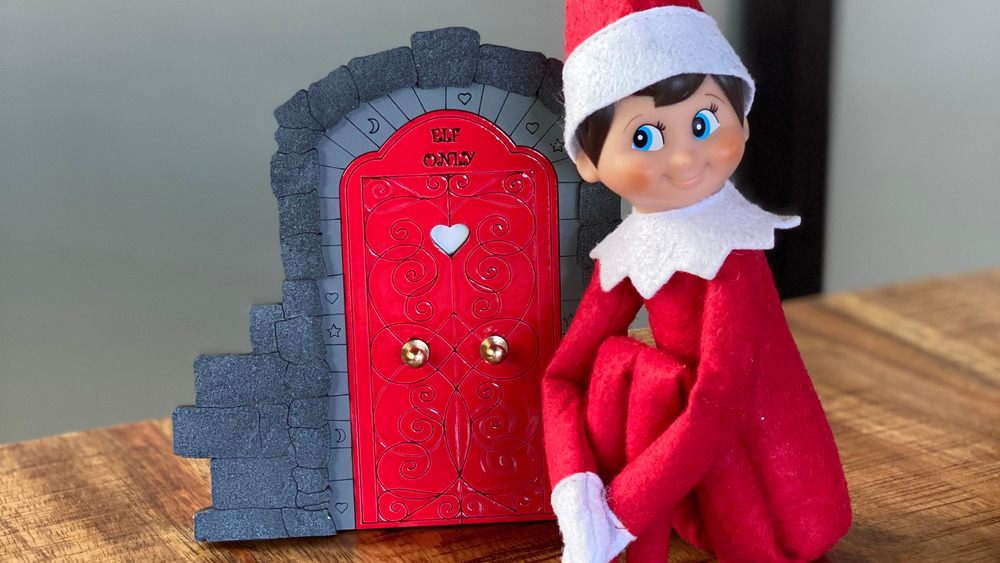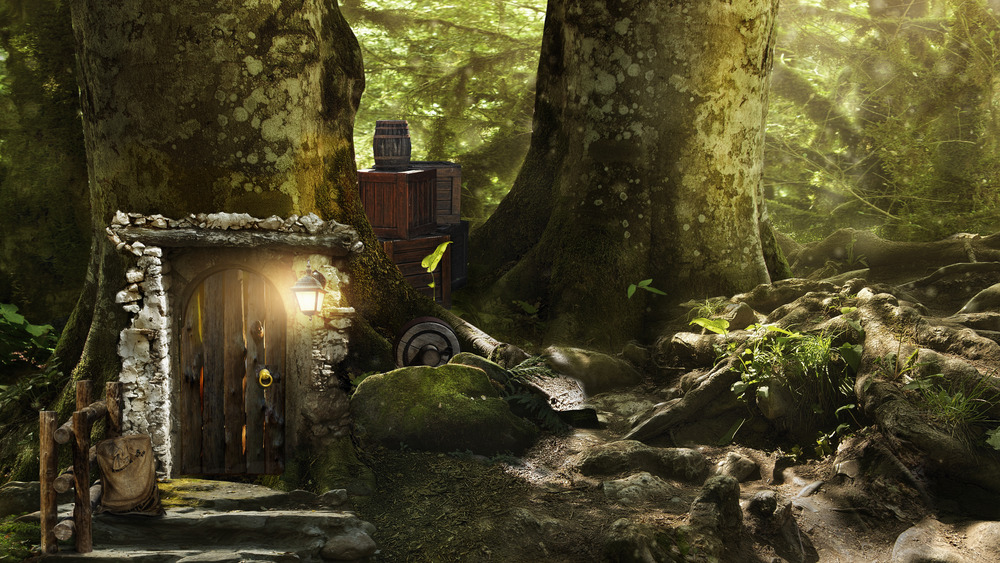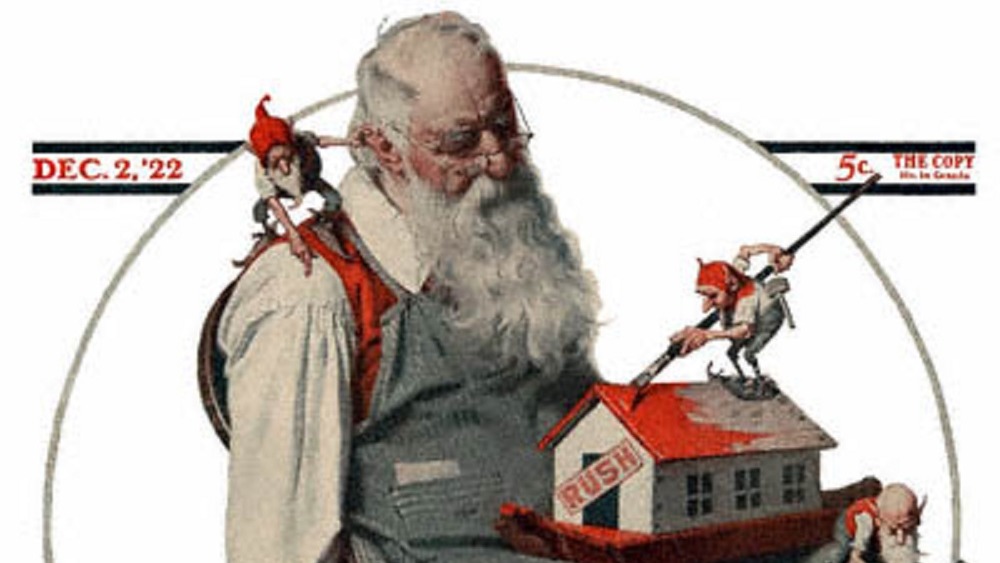The History Of Christmas Elves Explained
"Dobby is a free elf!" Good on you, Dobby (and Harry Potter, too). Santa's helper elves, however, are not so fortunate. Unlike Elrond from Lord of the Rings, Dökkálfar (subterranean-dwelling dark elves) from Norse mythology, or half-elves from a late-night game of Dungeons and Dragons, Santa's elves seem snared in a state of high-class slavery. Sure, they get access to The Man himself 365 days a year, but otherwise Santa Claus "... Keeps a great many elves at work / All working with all their might / To make a million of pretty things / Cakes, sugar-plums, and toys / To fill the stockings, hung up you know / By the little girls and boys." At least, this is how an (apparently anonymous) 1857 Harper's Weekly poem described Santa's elves, per Live Science. In fact, Santa used to be described as a "jolly old elf," as the famous 1823 poem by Clement Moore, "The Night Before Christmas," relates.
What exactly is going on, here? Where did these staunch Christmas helpers come from? Why exactly does an immortal, bearded man with a magic, toy-spawning bag of holding need slave elves to manufacture said toys before the toys are teleported into said bag's capacious space? This (and other yuletide mysteries of the ages) clearly needs unraveling. As it turns out, Santa's elves have more to with mythical and mythological forest tricksters than we may realize, and the lineage of modern, European Christmas traditions, on a whole.
The hidden folk of Norse mythology
There have been several elvish incarnations over the centuries that have resulted in the modern day Christmas elf. Indeed, the original roots come from Northern Germanic peoples, particularly those in Scandinavia. These collective cultures shared common tales that came together to compose what we know as Norse mythology, from about 790-1100 CE, as Ancient History cites. Original elves were referred to asálfar, or huldufólk ("hidden folk"), and were not associated with any deities or formal theology. Rather, various visions of them came from differing folklore, and included magical creatures such as faeries, nature spirits, and the like. In fact, belief in elves persists to this day; as of 2007, 37 percent of Icelanders said it was "possible" that álfar still existed.
Norse elves, though, were not the benign, chirpy little workshop denizens with cute winter hats that we see in 1964's stop-motion classic Rudolph the Red-Nosed Reindeer. Sometimes the Norse elves were indifferent toward human affairs, and other times were separated into "light" and "dark" types. Yet, they were more mischievous than not, and, just like Harry Potter's Dobby, they were believed to be tiny little guys who occupied people's homes. If folks behaved, didn't gossip or lie — made the "nice list," so to speak — then the elves protected livestock and hearth, and even left small presents, as Halloween Artist Bazaar outlines. Hmm.... Sounds similar to a familiar, big-bellied red-and-white-frocked Christmas present-giver, no?
From Satan's helpers to Santa's helpers in 1,000 years
With the spread of Christianity in Europe came the demonization (literally) of elves and other pagan entities. Medieval peoples started likening elves, gnomes, dwarves, what-have-yous, to Biblical demons. Even the famed, oral epic Beowulf (dated to somewhere between 700 and 1000 CE) mentions "etins and elves and evil-spirits, as well as the giants that warred with God." By the mid 1590s, when Shakespeare wrote A Midsummer Night's Dream, his character Puck was a mischievous, magically powerful prankster elf. It really wasn't until the aforementioned 1823 poem "The Night Before Christmas" (originally called "A Visit from St. Nicholas") that we witness the entire, codified portrait of Santa, the jolly old elf himself, giving gifts to children, complete with "a miniature sleigh, and eight tiny rein-deer." Note, though, that Santa, the sleigh, and reindeer are tiny, just like the original Norse elves.
From there, we have mass media to thank for our modern Christmas elves. Writers and artists were inspired by "The Night Before Christmas," and the illustrious Norman Rockwell, painter of Americana, portrayed Santa surrounded by tiny elf helpers in a 1922 painting. Disney jumped on board in 1932 with a short film titled "Santa's Workshop," depicting elves taking care of reindeer and helping Santa with a naughty-nice list. At that moment, the modern Christmas elf mythos solidified. Fast forward to 2003, and we've got Will Ferrell heading back to New York to find his biological father in the comedy Elf.


